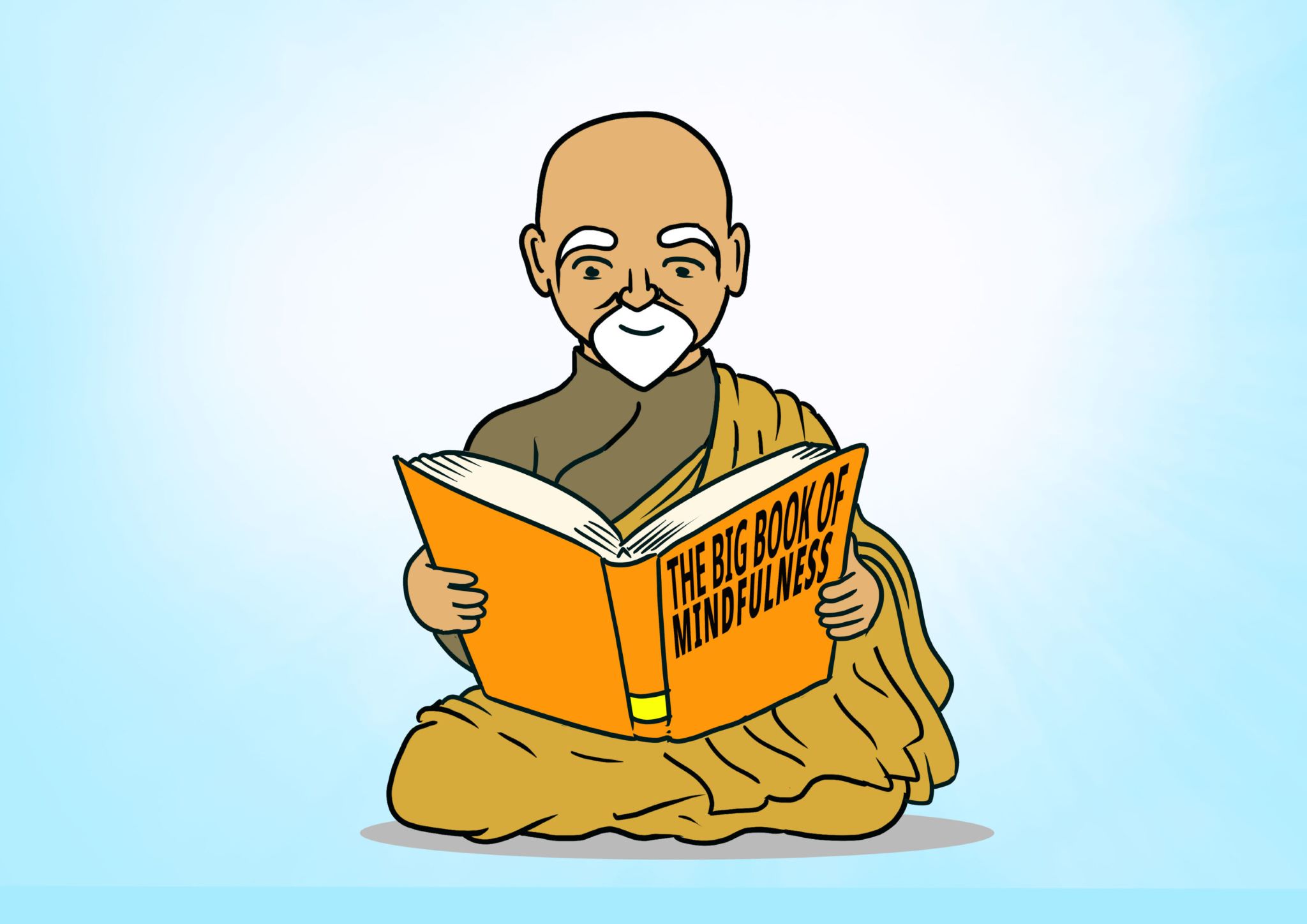
The Buddha famously said, “Mindfulness, I declare, is useful everywhere.”[1] Mindfulness is one of the most important teachings in all of Buddhism. It is the main pillar of the meditative system taught by the Buddha.[2] Furthermore, it is the first of the seven factors of enlightenment, the balancing factor of the five spiritual faculties, one of the eight parts of the Noble Eightfold Path and an accompanying factor of each of the other seven parts, and so on. The Buddha talks about mindfulness a lot.
Given the importance of mindfulness, you would think it’d be easy for me to give you a formal definition. I wish. Ancient texts never recorded the Buddha giving a formal definition of mindfulness in a clear expository manner. Instead, the texts give us numerous operational demonstrations of how mindfulness functions in the practice of Buddhism, and those of us who write books on Buddhism are left with the task of teasing out a definition (<grumble, grumble, grumble…>).
The Pali word sati, translated to “mindfulness”, originally means “memory”. Indeed, there are discourses where the Buddha uses the word sati to mean “memory”.[3] However, according to Buddhist scholar monk Bhikkhu Bodhi, the Buddha more frequently uses sati to mean “attentiveness directed to the present”[4] or more broadly, “lucid awareness of the phenomenal field”.[5] In a sense, sati can be thought of as present-moment awareness, the presence of which helps us remember something easily forgotten: the present moment.
The best way to understand mindfulness functionally is in relation to two Pali words: anupassanā, and upaṭṭhāna. Anupassanā is usually translated as “contemplation”, but it literally means “close and repeated seeing” (anu means “close or repeated”, and passanā means “seeing” [6]), in other words, to observe closely and repeatedly. Upaṭṭhāna means “attendance, waiting on, looking after, service, care, ministering.”[7] It literally means “standing near” (upa means “near”, and ṭhāna means “standing”). To really attend to somebody means to fully make yourself present for them, so upaṭṭhāna is about fully establishing your presence. Functionally, mindfulness means both: “to observe closely and repeatedly”,[8] and “to fully establish your presence with the object of meditation”[9] (such as the breath or bodily sensations).
That is mindfulness. To practice right mindfulness, though, requires one other really important quality: wise discernment. This is reflected in the Buddha’s use of the Pali word, pajānāti, which means to really know (jānāti mean “to know”, and pajānāti is extra-strength jānāti), which is in turn related to the word for wisdom, paññā. The Buddha’s instruction here is to pajānāti every object of mindfulness. One place this wise discernment really comes to fore is where mindfulness practice involves ethical considerations. For example, in one discourse, the Buddha instructed his disciples to practice right mindfulness by “mindfully abandoning” wrong intention, wrong speech, wrong action, and so on, and “mindfully acquiring and dwelling in” their right counterparts.[10] In this case, practicing right mindfulness requires us to wisely discern right from wrong. It is important to remember that mindfulness is not a passive state, it is a volitional activity.
Also importantly, just as tofu takes on the flavor of whatever seasoning it is cooked in, the object of mindfulness can cause the mindfulness practice to take on a different flavor. For example, when mindfulness is applied to the breath or bodily sensations, it is something akin to bare attention, but if mindfulness is applied to closely observing impermanence, it takes on a contemplative dimension, and if it is applied to a factor of the Noble Eightfold Path, say in mindfulness of right intention verses wrong intention, it takes on an ethical dimension.[11] If you ever hear Buddhist teachers arguing endlessly about whether mindfulness means bare attention or not, or other such matters, this is where it is coming from. That is why it is always useful for Buddhist teachers to study the early Buddhist texts.
In any case, all forms of mindfulness practices require three things:
- to continuously attend to the chosen object of meditation with a fully established presence,
- to observe it closely and repeatedly from moment to moment, and
- to do so with wise discernment.
This is true whether the object of meditation is sensation, a topic for contemplation, the present moment itself, or a memory about the past or a thought about the future.
Given all that is discussed, I would define mindfulness as remembering to pay attention, fully establishing presence with the object, closely and repeatedly observing it, and doing so with wise discernment. Alternatively, I also like Soryu’s shorter definition: remembering to pay attention, and remembering how best to pay attention.
Activities
References
[1] Saṃyutta Nikaya 46.53.
[2] Bhikkhu Bodhi (2011), What does mindfulness really mean? A canonical perspective. Contemporary Buddhism, 12:1, 19-39, DOI: 10.1080/14639947.2011.564813, p22. This entire section is heavily informed by Bhikkhu Bodhi’s very comprehensive paper.
[3] For example, in Saṃyutta Nikaya 48.9, where mindfulness is defined both as alertness and as the ability to “remember what was said and done long ago.”
[4] Bhikkhu Bodhi, The Middle Length Discourses of the Buddha. Wisdom Publications (1995).
[5] Bhikkhu Bodhi, What Does Mindfulness Really Mean?, p22.
[6] Bhikkhu Bodhi, What Does Mindfulness Really Mean?, p21.
[7] The Pali Text Society’s Pali-English Dictionary (Chipstead, Surrey, United Kingdom: Pali Text Society, 1921–1925)
[8] In Saṃyutta Nikaya 54.13, the Buddha taught that by anupassanā-ing body, sensations, mind and dharmas, one “develops and fulfills the enlightenment factor of mindfulness.”
[9] Stated in Paṭisambhidāmagga 1.1, “mindfulness is to be directly known as upaṭṭhāna.”
[10] Majjhima Nikāya 117.
[11] Bhikkhu Bodhi makes this point very skillfully in What Does Mindfulness Really Mean?
Special thanks to Bhikkhus Bodhi, Sujato and Anālayo for looking over multiple drafts of this post, which was surprisingly challenging to write.
Featured image by Colin Goh.

